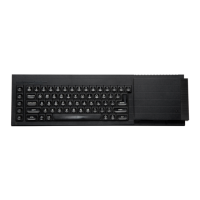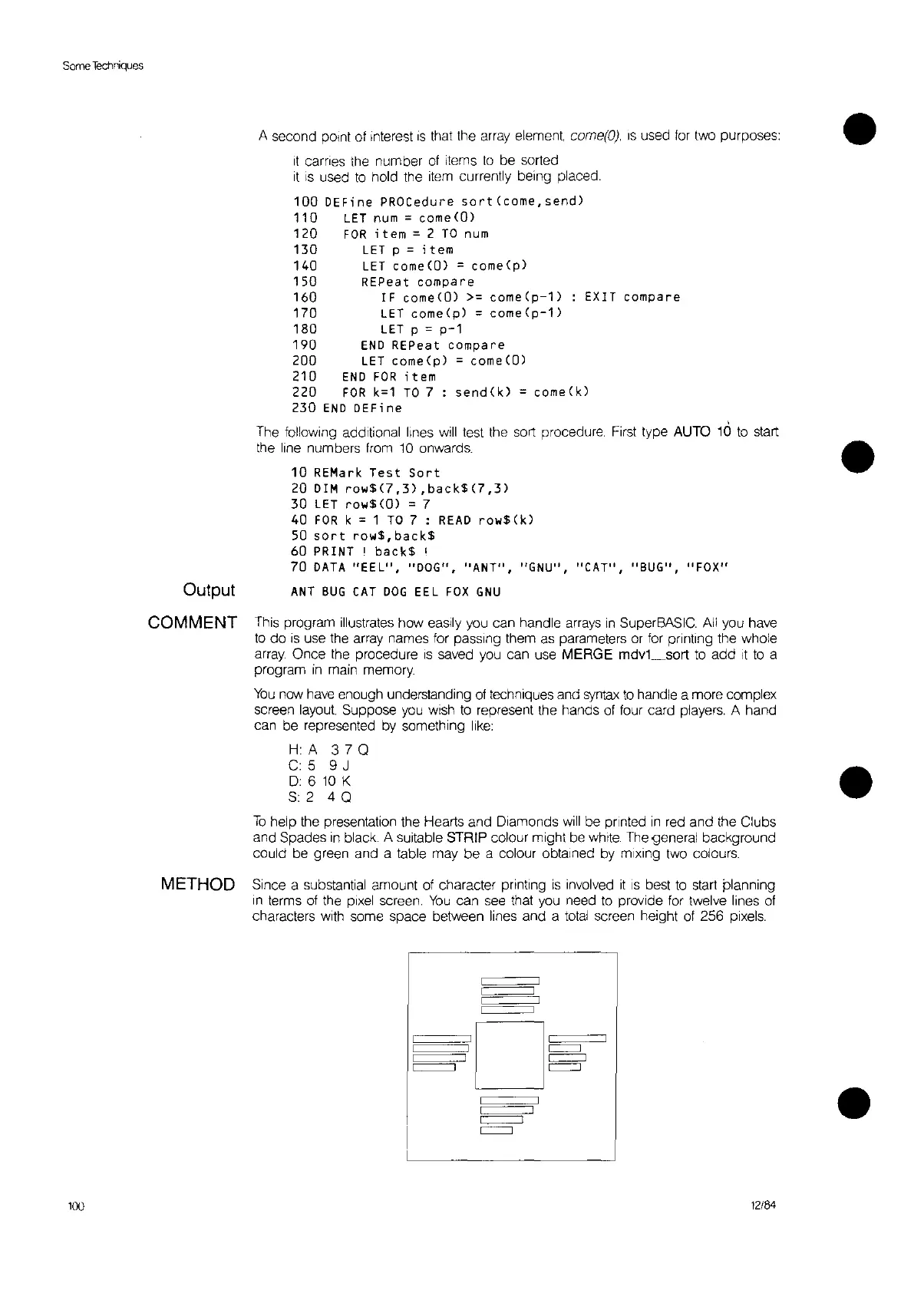Some
Techniques
100
A second
pOint
ot Interest
is
that the array element,
come(O),
IS
used for two purposes:
It
carnes the number
of
items
to
be sorted
it
is
used
to
hold the Item currently being placed.
100
DEFine
PROCedure
sort(come,send)
110
LET num = come<O)
120
FOR
item
= 2
TO
num
130
LET P =
item
140
LET come
(0)
= come
(p)
150
REPeat
compare
160
IF
come(O)
>=
come(p-1)
EXIT
compare
170
LET
come(p)
=
come(p-1)
180
LET P =
p-1
190
END
REPeat
compare
200
LET come
(p)
= come
(0)
210
END
FOR
item
220
FOR
k=1
TO
7 :
send(k)
=
come(k)
230
END
DEFine
The
follOWing
additional lines
will
test the sort procedure. First type AUTO 10 to start
the line numbers from
10 onwards.
10
REMark
Test
Sort
20
DIM
row$(7,3),back$(7,3)
30
LET
row$(O)
= 7
40
FOR
k = 1
TO
7 :
READ
row$(k)
50
sOrt
row$,back$
60
PRINT
I
back$
I
70
DATA
"EEL
II
, "DOG", "ANT", "GNU", "CAT", IlBUG", "FOX"
Output
ANT
BUG
CAT
DOG
EEL
FOX
GNU
COMMENT This program illustrates how easily you can handle arrays
in
SuperBASIC All you have
to
do
is
use the array names for passing them as parameters or for printing the whole
array. Once the procedure
IS
saved you can use
MERGE
mdv1_sort
to
add
It
to a
program
in
main
memory
You
now have enough understanding
of
techniques and syntax
to
handle a more complex
screen layout Suppose you wish to represent the hands of four card players. A hand
can be represented by something like:
H:
A
37
Q
C.
5 9 J
D
610
K
S:
2 4 Q
To
help the presentation the Hearts and Diamonds
will
be printed
in
red
and
the Clubs
and Spades
in
black. A suitable STRIP colour might be white. The general background
could be green and a table may
be
a colour obtained by mixing two colours.
METHOD Since a substantial amount of character printing
is
involved
it
is
best to start planning
in
terms of the pixel screen.
You
can see that you need to provide for twelve lines of
characters with some space between lines and a total screen height of 256 pixels.
=
=
12/84
•
•
•
•

